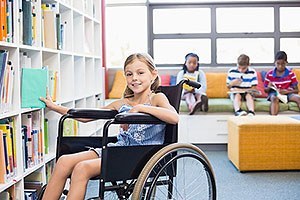

An evacuation in a school is particularly challenging – that’s why having an emergency evacuation plan that caters for everyone – including those with mobility limitations – is essential. Here, we’ll discuss some of the unique challenges schools face in getting everyone out safely, and provide some tips to help you overcome them.
Making a Plan

Buildings and grounds: You’ll need a map that accurately shows where all buildings are located, and includes important information like stairs, exits and fire refuge zones.
Timetables: Keep an up-to-date timetable with your plan, showing all classes, including times and locations, so you always know where everyone is.
Children: Having daily access to the number of children in attendance is important, plus, for emergency planning purposes, you’ll also need to know about each groups’ ability to follow instructions and each individual’s level of mobility.
Response: How far away is help if you need it? Have numbers for emergency services permanently on display and an emergency tool kit filled with items to help keep you safe until emergency services arrive.
Staff: How many staff are on hand to assist with getting everyone out safely? Remember, you’ll need extra numbers available to assist younger children and those with limited mobility.
After school activities: Are after school activities run within the school? Have attendees at such activities been considered as part of the evacuation plan?
Download Free Personal Emergency Evacuation Plan PEEP Templates
Getting Everyone to Safety

Extra supervision: Some children will be able to follow instructions and exit to a safe place independently, but others will need additional help. Very young children and those with a mild balance impairment may require some extra supervision while they evacuate.
Extra guidance: There may be children who need their hand held to safely exit, such as those with a vision impairment.
Assisted exit: Children who use a wheelchair for mobility who are located in an accessible building may be able to exit independently. However, if they are unable to keep up with their classmates, it is recommended that the wheelchair should be pushed by an adult.
Upper storey exits: In the case of a child in a wheelchair needing to exit a building with stairs, the use of some emergency evacuation equipment may be required. Some larger buildings might have a designated Area of Refuge located on the upper level, and if this is the case in your school, you must be sure the room is equipped with a reliable communication system and the ventilation is adequate. If no Area of Refuge is available, an emergency evacuation chair can be used to safely evacuate. It’s essential that it is located near the stairs so it’s easily accessed in the event of an emergency, and that staff are trained to use it. For smaller children, an evacuation sled may be more practical.
In closing
So, as you start the new school year, make sure that you have an emergency evacuation plan that is up-to-date and caters for everyone. If you have students with mobility limitations, plan for their safe exit – including from buildings with stairs. When you have the right emergency equipment on hand, and have a solid evacuation plan, you give everyone in your school the best chance to get out safely.
Also, view our post The Rising Risks of Vertical Schools for Students and Teachers
Over to You
If you have any questions regarding emergency evacuation plans and equipment for schools, contact our friendly team for expert advice.
What does your school do? Share with our readers on the EvacuLife Facebook Page

